NewsBeat
Oxfam report: Britain should give India back its artefacts in lieu of £52trn in colonialism reparations, says historian

A historian has suggested Britain return looted artefacts to its former colonies instead of vast sums in reparations, after an Oxfam report suggested India was owed over £52 trillion.
The report suggested that Western nations commit to providing former colonies with at least £4 trillion annually in reparations and “climate debt” – a sum reflecting the costs developed economies owe poorer nations for climate change.
The report, titled Takers not Makers: The Unjust Poverty and Unearned Wealth of Colonialism, said: “Oxfam calculates that between 1765 and 1900, the richest 10 per cent in the UK extracted wealth from India alone worth US$33.8 trillion (£27.38 trillion) in today’s money.”
It added that “this would be enough to carpet the surface area of London in £50 notes almost four times over”.
The figure of $64.82 trillion (£52.58 trillion) was not calculated by the report’s authors but was attributed to two Delhi-based Indian economists, Utsa Patnaik and Prabhat Patnaik.
“Reparations must be made to those who were brutally enslaved and colonised,” the report read. “Our modern-day colonial economic system must be made radically more equal to end poverty. The cost should be borne by the richest people who benefit the most.”
Rana Safvi, a leading Indian historian and author, questioned the practicality and implications of such large sums in monetary reparations. She told The Independent that there were concerns about the complexity of addressing historical wrongs and the risk of opening a Pandora’s box, considering the vast scale of past injustices worldwide.
“What they can actually return are the artefacts, the jewellery, the documents, the manuscripts, the paintings, all that has been looted from India should definitely be sent back,” she said. “Not just India, you know – all these museums all over the Western world are populated by things from Africa and Asia only.
“While the return of money may be chasing a fool’s dream, repatriating artefacts and treasures illegally taken from India is necessary and achievable.”
The Oxfam report drew sharp criticism from some other academics. Prof Lawrence Goldman, of St Peter’s College, Oxford, was quoted as saying by The Telegraph: “Oxfam depends on public trust in the accuracy of information it provides. Producing bogus history warped by ideology hardly encourages anyone to dig deep in their pockets and send them cash.”
He added: “There’s a reverse argument in which Indians should pay Britain for saving them from becoming part of the French overseas empire in the 18th century or being swallowed by Tsarist Russia in the 19th century, or being overrun by the Japanese in the 20th century, all of which were real threats.
“But arguments of this type, in which history becomes ammunition for a political assault, are worthless.”
An Oxfam spokesperson told The Independent: “Putting an exact figure on the cost of colonialism to countries like India will always be a source of debate. We believe the figure we quoted in the report is a reasonable one, but other estimates can be made.
“However, very few would dispute that Britain derived a significant financial benefit from its empire and its colonisation of India in particular, and that these benefits accrued mainly to the richest people in the UK at the time.”
The report said that in 2024 billionaire wealth grew three times faster than in 2023, with five trillionaires projected within a decade. Meanwhile, crises of economy, climate, and conflict mean the “number of people living in poverty has barely changed since 1990”.
Most billionaire wealth – 60 per cent – stems from inheritance, corruption, or monopoly power, Oxfam said. It said that the world’s inequality has roots in colonialism, which enriched the wealthy while exploiting marginalised groups, including women and racialised communities.
“This exploitation of people worldwide drove an explosion of wealth for rich people in rich countries and contributed to deep inequality in the Global South, often favouring an elite few at the expense of the many.”
The “Takers not Makers” report said this legacy persists, as wealth continued to flow from the Global South to the Global North at a rate of $30m (£24.5m) per hour. It noted that to address this imbalance, reparations for colonial exploitation and systemic reforms targeting the wealthiest are necessary to achieve equality and end poverty.
“Reparations to the victims must be made to ensure restitution, provide satisfaction, compensate for damages incurred, ensure rehabilitation and prevent future abuses,” it said.
An Oxfam spokesperson added: “Along with many other scholars and activists, we believe it is reasonable to ask the richest countries to pay reparations for the harm done by colonialism. It’s not about asking individuals who are already struggling to pay for the wrongs of the past, reparations should be financed by those who continue to profit from these systems, such as the wealthiest individuals and corporations, not ordinary people.”
“We are not saying that colonialism is the sole driver of inequality; other causes include monopoly power and cronyism and corruption. But colonialism, both historically and in the modern day is a crucial factor that must be addressed to create a more equitable future for all,” they said.
Oxfam International executive director, Amitabh Behar, said: “The capture of our global economy by a privileged few has reached heights once considered unimaginable. The failure to stop billionaires is now spawning soon-to-be trillionaires. Not only has the rate of billionaire wealth accumulation accelerated – by three times – but so too has their power.”
He added: “The crown jewel of this oligarchy is a billionaire president, backed and bought by the world’s richest man Elon Musk, running the world’s largest economy. We present this report as a stark wake up-call that ordinary people the world over are being crushed by the enormous wealth of a tiny few.”
Oxfam also suggested that governments cap top incomes, tax the rich, abolish tax havens, and reverse wealth flows from the Global South. “Inheritance needs to be taxed to dismantle the new aristocracy,” it said.
“Former colonial powers must also confront the lasting harm caused by their colonial rule, offer formal apologies, and provide reparations to affected communities,” the statement said.
NewsBeat
Southport stabbing: Everything we know about attack as Axel Rudakubana to be sentenced

Axel Rudakubana has admitted to killing three girls at a dance class in Southport on the first day of his trial. The 18-year-old was to stand trial at Liverpool Crown Court on Monday charged with 16 offences, including three counts of murder and 10 counts of attempted murder.
Dramatically changing his plea at the last moment, the teenager admitted to all the charges. He pleaded guilty to the murders of Bebe King, six, Elsie Dot Stancombe, seven, and Alice da Silva Aguiar, nine. He also admitted to possessing terrorist material and producing the toxin ricin.
Rudakubana will be sentenced on Thursday, Mr Justice Goose said in court. He told the teenager that it would be inevitable that a life sentence equivalent would be imposed upon him.
The judge also apologised to the families of the victims who, because of Rudakubana’s surprise guilty plea, were not in court to see his admission.
Here’s everything we know about the devastating Southport attack of July 2024.
What did Axel Rudakubana do?
On the morning of 29 July 2024, then 17-year-old Axel Rudakubana travelled from his home village of Banks in Lancashire via taxi. He was then seen calmly exiting the vehicle and entering the dance studio on Hart Street.
In just minutes, witnesses would describe seeing young girls being carried out of the building covered in blood with stab wounds to their backs, while their screaming parents rushed to find them.
Advertised for children aged between years 2 and 6 at primary school, the summer event quickly turned to “a scene from a horror movie”, with an enormous emergency incident declared.
Bebe and Elsie both died at the scene. Alice died in hospital the day after the incident.

Ten others were injured, including eight children, yoga teacher Leanne Lucas and businessman John Hayes, who both had heroically attempted to prevent the attack.
He has now pleaded guilty to all charges of murder and attempted murder, as well as terror-related offences. He was found to have a PDF file titled “Military Studies in the Jihad Against the Tyrants: The Al-Qaeda Training Manual” and charged with possessing information likely to be useful to a person committing or preparing an act of terrorism.
What happened after the attack?
Shortly after the murders, violent riots broke out across the country. These were fuelled by far-right misinformation online which claimed that Rudakubana – whose identity was not yet public – was a Muslim and asylum seeker. Much of the violence was targeted towards Muslim and migrant communities.
Over the course of six days, the rioting became the largest incident of social unrest in the UK since the 2011 riots. Attempting to tackle the violence, around 130 police officers were injured. By September, 1,280 arrests had been made, with 800 charged.
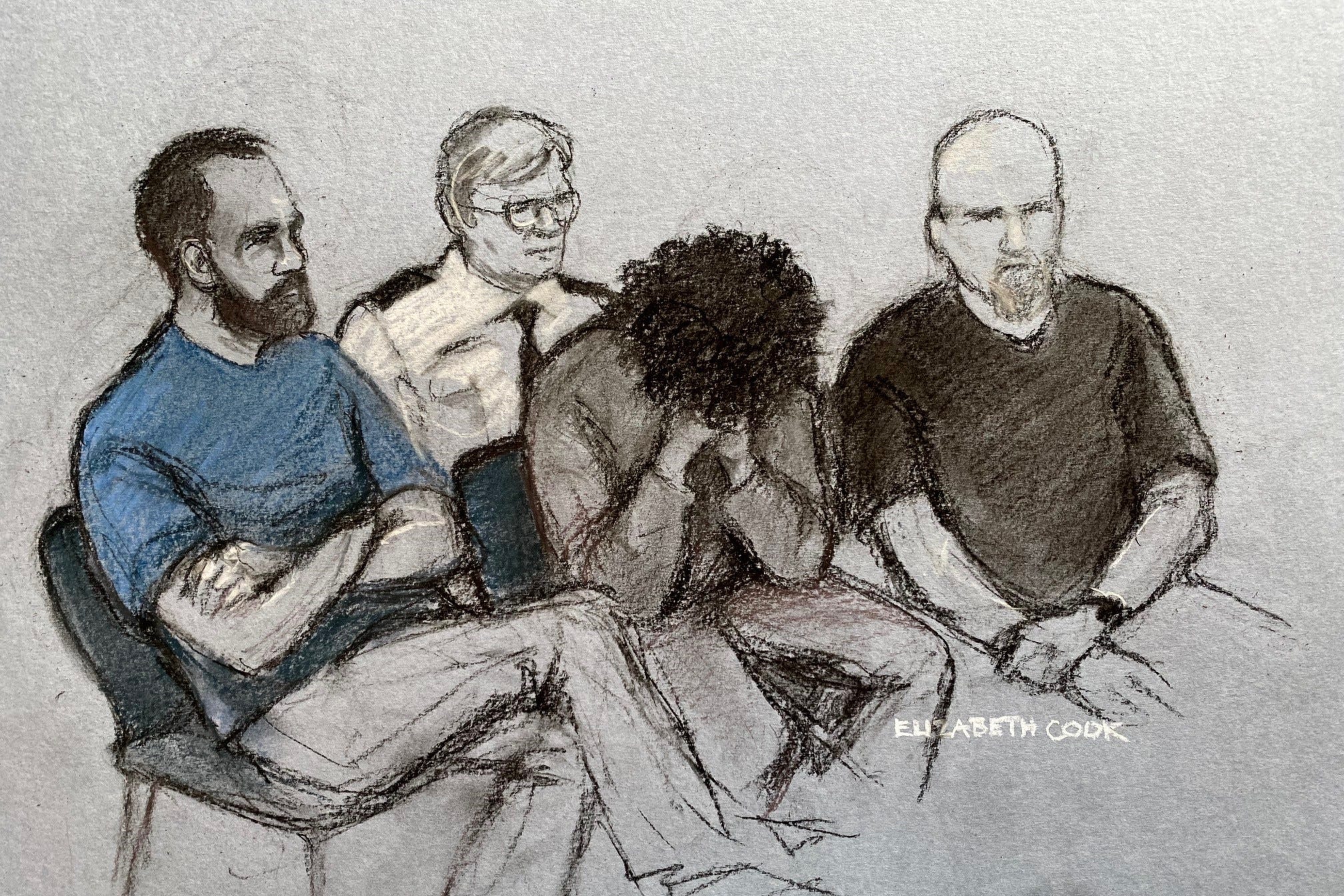
In the months since his crime and the subsequent riots, Rudakubana had remained consistently silent in the dock, with prosecutors and investigators compiling CCTV and witness statements to establish the case against him.
In a previous appearance, the court heard that Rudakubana had been diagnosed with autism spectrum disorder, and had refused to engage with a psychiatrist at a police station. In the period leading up to the attack, he had also been unwilling to communicate with his family and had not been leaving the house.
Rudakubana’s not-guilty pleas were entered on his behalf in December 2024, as he chose not to speak. But as each charge was read to him on 20 January this year, the teenager quietly said “guilty” to each count.
Public inquiry
The home secretary announced on Monday that there will be a public inquiry into how Rudakubana “came to be so dangerous” and why Prevent “failed to identify the terrible risk” he posed to others.
Yvette Cooper confirmed the 18-year-old had “contact with a range of different state agencies throughout his teenage years” before carrying out his “meticulously planned rampage”.
Ms Cooper said in a statement: “He was referred three times to the Prevent programme between December 2019 and April 2021 aged 13 and 14.
“He also had contact with the police, the courts, the Youth Justice system, social services and mental health services.
“Yet between them, those agencies failed to identify the terrible risk and danger to others that he posed.”
Announcing the public inquiry, the Home Secretary continued: “Although, in line with CPS advice to preserve the integrity of the prosecution, we were constrained in what we were able to say at the time, the Home Office commissioned an urgent Prevent Learning Review during the summer into the three referrals that took place and why they were closed.
“We will publish further details this week, alongside new reforms to the Prevent programme.
“But we also need more independent answers on both Prevent and all the other agencies that came into contact with this extremely violent teenager as well as answers on how he came to be so dangerous, including through a public inquiry that can get to the truth about what happened and what needs to change.”
NewsBeat
Man City's Walker to join AC Milan on loan

AC Milan sign Manchester City captain Kyle Walker on loan for the remainder of the season.
NewsBeat
‘Significant’ rise in children being admitted to acute hospital wards for mental health issues, says study | UK News

Acute hospital wards are facing “real challenges”, as a study showed the number of children being admitted due to mental health concerns has gone up by two-thirds in 10 years.
The research, led by a team from University College London (UCL), looked at data on all admissions for five to 18-year-olds to general acute medical wards in England from 2012 to 2022.
These wards assess and treat patients and are separate from specialist mental health wards.
Annual admissions for children and young people, aged five to 18 with mental health issues, increased by 65% in a decade – from 24,198 in 2012 to 39,925 in 2022, according to the study. More than half (53.4%) were due to self-harm.
The figure of 39,925 patients was among 342,511 people in that age bracket who were admitted to hospital for any cause in 2021/22.
Big rise in admissions for girls
The rise in mental health admissions was particularly high in girls aged 11 to 15, climbing from 9,901 to 19,349 – an increase of 112.8%, said researchers.
“Steep relative increases” among children aged five to 10 and “striking rates of self-harm in females” were also highlighted by the analysis.
And the number of admissions for eating disorders jumped from 478 to 2,938.
People are usually referred to a general acute medical ward from the emergency department, or by their GP or outpatient clinic.
‘Increased intensity’
Dr Lee Hudson, of UCL Great Ormond Street Institute of Child Health and Great Ormond Street Hospital, warned the “increased intensity” in admissions is leading to challenges for patients and staff on acute wards.
He said: “Over the past decade, we’ve observed a significant rise in mental health admissions among children and young people to acute medical wards.
“Acute medical wards are important places for caring for young people with mental health concerns – especially those with co-existing physical health problems like starvation from an eating disorder.”
Read more from Sky News:
Man admits murdering racing commentator’s wife and daughters
‘Danger to life’ weather warning issued for parts of UK
Dr Hudson said the “increased intensity” is “presenting real challenges for acute wards, both for patients and their families and the staff supporting them”.
He warned they may not be set up with an “appropriate ward environment for this care”, and sometimes staff working there “need more training and support with relevant skills”.
‘Improving care is essential’
And Dr Hudson said the issue “isn’t going to go away”, as he suggested a focus on “improving care is essential”.
Dr Karen Street, from the Royal College of Paediatrics and Child Health, said: “A 65% increase in mental health admissions further evidences the alarming deterioration in the mental health and wellbeing of our children and young people.”
She also highlighted that while the COVID-19 pandemic had a “profound impact” on youngsters, it was not the “sole factor” in the increase in admissions.
Politics
Keir Starmer pledges to ‘take on Nimbys’ in bid to slash red tape on Britain’s growth

Sir Keir Starmer has vowed to challenge opponents of major infrastructure projects after declaring Labour is “backing the builders, not the blockers”.
The Prime Minister said he would bring an end to “challenge culture” and pledged to take on so-called “nimbys”.
Downing Street said it hoped it would bring an end to “cynical” or “hopeless” cases causing delays and increasing the cost of infrastructure projects.
The Government claims more than 58 per cent of all decisions on “major infrastructure” get taken to court as it commits to making 150 major infrastructure project decisions by the next election.
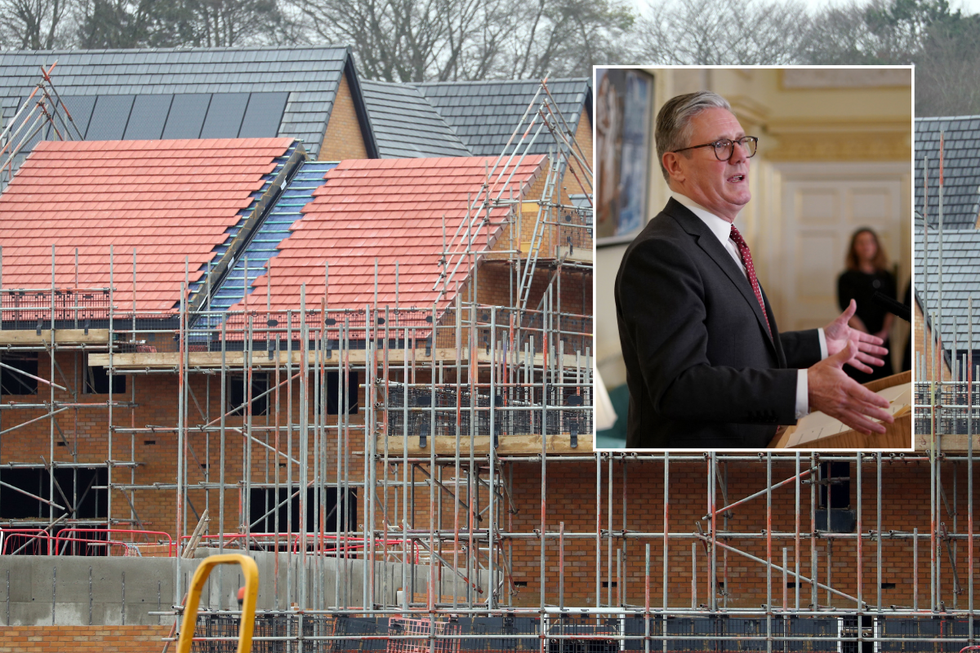
Starmer has vowed to take on ‘nimbys’ in a blistering attack
PA
Opponents currently have three opportunities to secure permission for a judicial review against a major infrastructure project, firstly by writing to the High Court, then in an oral hearing and finally by asking the Court of Appeal.
But under plans announced by Downing Street, the written stage will be scrapped and any cases deemed “totally without merit” will be unable to ask the Court of Appeal to reconsider.
The Prime Minister said: “For too long, blockers have had the upper hand in legal challenges – using our court processes to frustrate growth. We’re putting an end to this challenge culture by taking on the Nimbys and a broken system that has slowed down our progress as a nation.
“This is the Government’s Plan for Change in action – taking the brakes off Britain by reforming the planning system so it is pro-growth and pro-infrastructure.”
LATEST DEVELOPMENTS

Sizewell was approved despite 16 months of campaigning
PA
According to the Government, more than half of decisions on nationally significant infrastructure projects were taken to court, causing an average delay of 18 months and adding millions to costs.
Officials pointed to cases including the approval of Sizewell C, in Suffolk, where campaigners spent 16 months seeking permission for a judicial review despite their case being described as “unarguable” at every stage.
However, only some of the grounds in the Sizewell C case were deemed “totally without merit”, meaning the remaining grounds could still have been reconsidered by the Court of Appeal.
Shadow Housing Secretary Kevin Hollinrake said: “While we welcome the Government taking forward Conservative initiatives to streamline the planning system, Labour’s blocking of our efforts to cut EU legacy red tape, such as nutrient neutrality, so they can align more closely with the European Union will hold Britain back.”
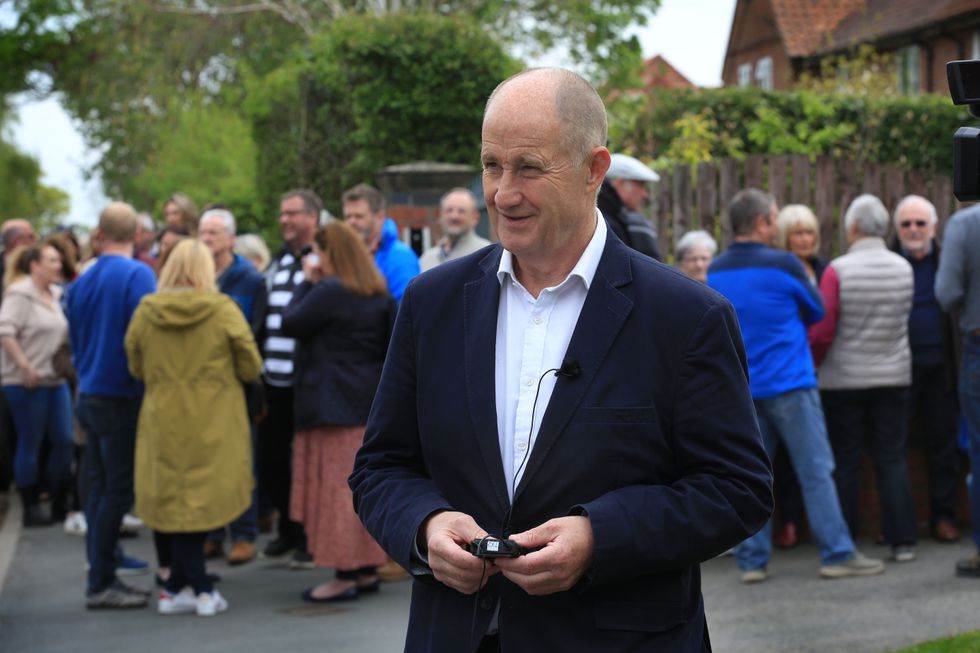
Minister Kevin Hollinrake
Getty
The Prime Minister also pledged to “bring back common sense” to building new projects.
Writing for The Daily Mail, Starmer said: “Cases that are unarguable and unwinnable can be brought back to the courts three times.
“That causes years of delay. It costs hundreds of millions of pounds. It clogs up the courts. And strangles growth.
“The entire country pays the price. Bringing back common sense to building is the least this country deserves. Because if we want growth, we need the infrastructure to support it.”
NewsBeat
Mapmakers are lost as Donald Trump renames the world: ‘Gulf of what?’

President Trump’s “America First” worldview has extended to renaming geographical landmarks.
Leaving many scratching their heads in confusion, none more so than mapmakers.
Trump’s decision has sparked controversy and ridicule. He declared the Gulf of Mexico the “Gulf of America” and reverted Denali back to Mt. McKinley, undoing a previous Obama administration decision.
While these changes are largely symbolic, they’ve prompted mapmakers and educators to reconsider established labels.
Florida Governor Ron DeSantis embraced the “Gulf of America” designation on an official document, but other states’ responses remain uncertain.
Mexican President Claudia Sheinbaum joked that if Trump went ahead with the renaming, her country would rename North America “Mexican America.” On Tuesday, she toned it down: “For us and for the entire world it will continue to be called the Gulf of Mexico.”

Map lines are inherently political. After all, they’re representations of the places that are important to human beings — and those priorities can be delicate and contentious, even more so in a globalized world where people from many nations share the same information sources.
“Denali” is the mountain’s preferred name for Alaska Natives, while “McKinley” is a tribute to President William McKinley, initiated in the late 19th century by a gold prospector. And there’s no agreed-upon scheme to name boundaries and features across the Earth. China sees Taiwan as its own territory, and the countries surrounding what the United States calls the South China Sea have multiple names for the same body of water.
The Persian Gulf has been widely known by that name since the 16th century, although usage of “Gulf” and “Arabian Gulf” is dominant in many countries in the Middle East. The government of Iran — formerly Persia — threatened to sue Google in 2012 over the company’s decision not to label the body of water at all on its maps. Many Arab countries don’t recognize Israel and instead call it Palestine. And in many official releases, Israel calls the occupied West Bank by its biblical name, “Judea and Samaria.”

Americans and Mexicans diverge on what to call another key body of water, the river that forms the border between Texas and the Mexican states of Chihuahua, Coahuila, Nuevo Leon and Tamaulipas. Americans call it the Rio Grande; Mexicans call it the Rio Bravo.
Trump’s executive order — titled “Restoring Names That Honor American Greatness” — concludes thusly: “It is in the national interest to promote the extraordinary heritage of our Nation and ensure future generations of American citizens celebrate the legacy of our American heroes. The naming of our national treasures, including breathtaking natural wonders and historic works of art, should honor the contributions of visionary and patriotic Americans in our Nation’s rich past.”
What to call the gulf with the 3,700-mile coastline?
“It is, I suppose, an internationally recognized sea, but (to be honest), a situation like this has never come up before so I need to confirm the appropriate convention,” said Peter Bellerby, who said he was talking over the issue with the cartographers at his London company, Bellerby & Co. Globemakers. “If, for instance, he wanted to change the Atlantic Ocean to the American Ocean, we would probably just ignore it.”
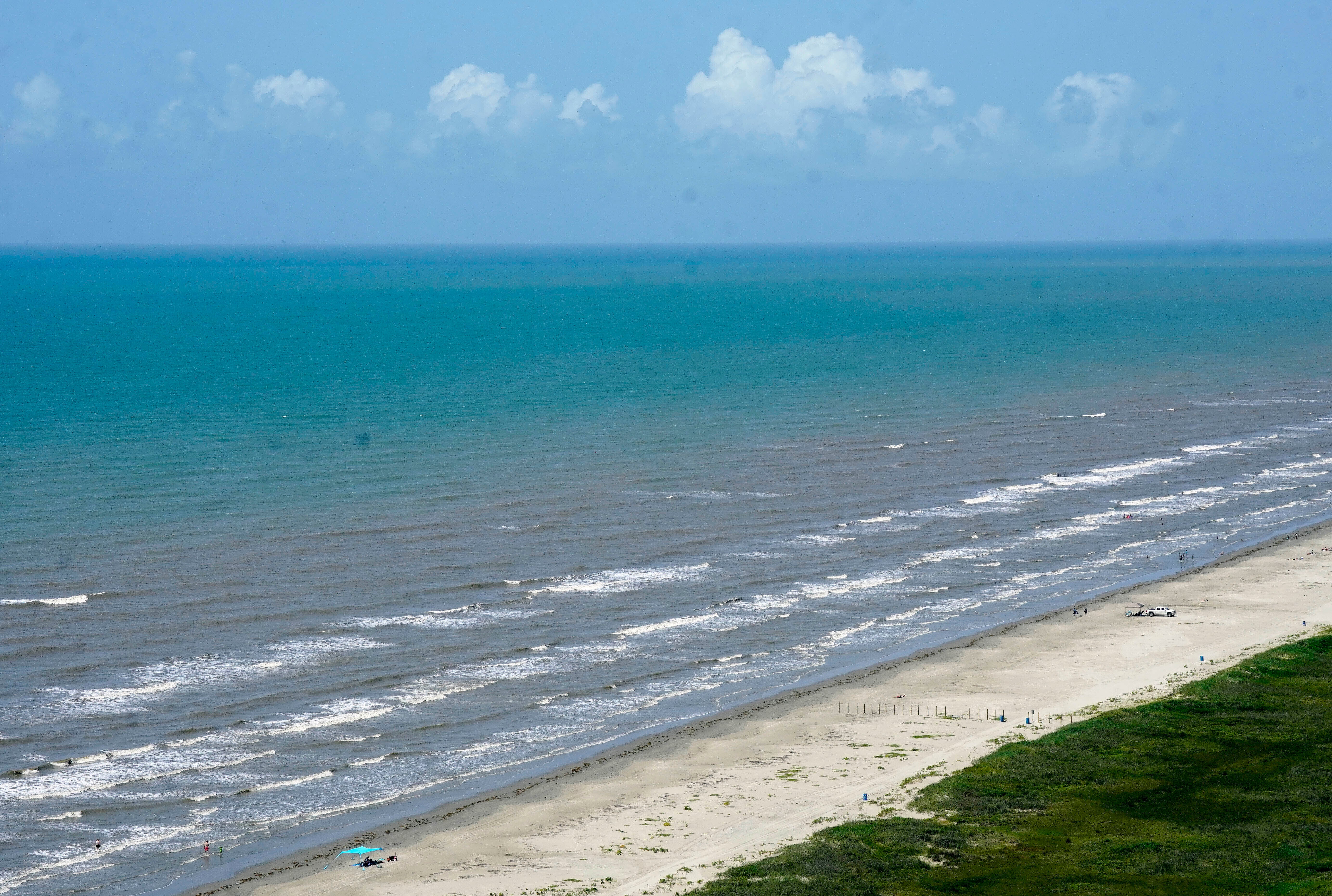
As of Wednesday night, map applications for Google and Apple still called the mountain and the gulf by their old names. Spokespersons for those platforms did not immediately respond to emailed questions.
A Google Map of The Gulf of Mexico:
A spokesperson for National Geographic, one of the most prominent map makers in the U.S., said this week that the company does not comment on individual cases and referred questions to a statement on its web site, which reads in part that it “strives to be apolitical, to consult multiple authoritative sources, and to make independent decisions based on extensive research.” National Geographic also has a policy of including explanatory notes for place names in dispute, citing as an example a body of water between Japan and the Korean peninsula, referred to as the Sea of Japan by the Japanese and the East Sea by Koreans.
In discussion on social media, one thread noted that the Sears Tower in Chicago was renamed the Willis Tower in 2009, though it’s still commonly known by its original moniker. Pennsylvania’s capital, Harrisburg, renamed its Market Street to Martin Luther King Boulevard and then switched back to Market Street several years later — with loud complaints both times. In 2017, New York’s Tappan Zee Bridge was renamed for the late Gov. Mario Cuomo to great controversy. The new name appears on maps, but “no one calls it that,” noted another user.
NewsBeat
Meta denies forcing users to follow Trump administration accounts

Meta, the company which owns social media networks Facebook and Instagram, has denied forcing users to follow official accounts belonging to senior figures in the new Trump administration.
Some users of the platforms had complained following Donald Trump’s inauguration on Monday that they had “automatically” been made to follow the new president, as well as those of Vice-President JD Vance and First Lady Melania Trump.
Meta spokesman Andy Stone explained that the accounts were managed by the White House, which had updated them to reflect the new position holders.
“This is the same procedure we followed during the last presidential transition,” he wrote in a statement.
The accounts carry the handles Potus – which stands for “president of the United States” – as well as VicePresident and Flotus, an acronym for the first lady.
Archived versions of the pages show the Potus and Flotus accounts previously carried the name and official portrait of Joe Biden and Jill Biden, respectively.
Mr Stone added that it “may take some time for follow and unfollow requests to go through as these accounts change hands”.
Trump became US president for the second time on Monday and quickly set about issuing a range of executive orders and directives asserting his political agenda – ranging from withdrawing from the World Health Organisation to declaring a national emergency at the border with Mexico.
His inauguration was attended by some of the most influential tech billionaires, including Meta boss Mark Zuckerberg and X chief Elon Musk, who also has an advisory role in the new administration.
Trump has previously been heavily critical of Meta, which banned him in 2021 for what it described as his “praise for people engaged in violence” during the 6 January riots at the US Capitol.
The president and his allies also accused the firm of co-operating with the Biden administration to supress reports concerning allegations about Biden’s son, Hunter, and some content surrounding the Covid pandemic. Mr Zuckerberg said he regretted the decision.
In August, Trump wrote in a book that Mr Zuckerberg would “spend the rest of his life in prison” if he attempted to interfere in the 2024 presidential election.
Since Trump’s election win in early November, though, Mr Zuckerberg appears to have curried favour with him, dining with Trump at his Mar-a-Lago residence at the end of the month and donating $1m (£786,000) towards his inauguration a few weeks later.
Meta also said earlier this month that it would end third-party fact-checking in favour of an approach similar to X’s community notes, in an apparent attempt to address some of Trump’s prior criticisms.
The company said this marked a return to its “fundamental commitment to free expression”.
NewsBeat
Sir Keir Starmer vows to ‘take on NIMBYs’ and halt delays for major building projects | Politics News

Sir Keir Starmer is vowing to take on “the NIMBYs” by reducing legal challenges to infrastructure building – with a new approach stopping “newts and bats” from blocking construction.
The Labour government has made growth one of its primary targets, with a key plank of this strategy to build new infrastructure like roads and power plants.
Attempts to complete such projects in recent years have ended up bogged down in legal challenges, which is what the government is seeking to address.
NIMBYs – which stands for “not in my back yard” – refers to people who oppose building in their area.
Politics latest: Top economist issues warning to Reeves
Sir Keir Starmer said: “For too long, blockers have had the upper hand in legal challenges – using our court processes to frustrate growth.
“We’re putting an end to this challenge culture by taking on the NIMBYs and a broken system that has slowed down our progress as a nation.
“This is the government’s plan for change in action – taking the brakes off Britain by reforming the planning system so it is pro-growth and pro-infrastructure.”
The government claims more than 58% of all decisions on “major infrastructure” get taken to court – something that is “getting in the way of the government’s central mission to grow the economy”.
And it says each challenge takes around a year and a half to resolve.
As part of the government’s plans, so-called “unarguable cases” will only be able to be brought back to courts once – rather than the current three.
The first attempt, the “paper permission stage” will be scrapped, and a new law will allow a High Court judge to deem a case “totally without merit”, preventing appeals.
The government also says it wants to “end the block and delay to building homes and infrastructure from current environmental obligations“.
Read more:
Newts threaten Boris Johnson’s swimming pool
£100m bill for HS2 ‘bat shed’ that isn’t needed
Instead, a new “nature restoration fund” will allow developers to pay into a central fund which will ensure the environment is protected, rather than each individual project having to carry out its own mitigations.
“The new common-sense approach doesn’t allow newts or bats to be more important than the homes hard-working people need, or the roads and hospital this country needs,” the government said.
The planning changes come following a review carried out last year by planning lawyer Lord Charles Banner – who recommended a streamlined system.
Conservative shadow levelling up secretary Kevin Hollinrake said: “While we welcome the government taking forward Conservative initiatives to streamline the planning system, Labour’s blocking of our efforts to cut EU legacy red tape, such as nutrient neutrality, so they can align more closely with the European Union, will hold Britain back.
“Labour ministers have also sat on their hands on implementing the measures introduced by the Conservatives to cut bureaucracy and provide greater certainty to local residents and developers, and abolishing and replacing hundreds of local councils and asking all their employees, including planning officers, to reapply for their jobs, is hardly a recipe for accelerating decision-making.”
NewsBeat
Couples wed in a riot of colour as same-sex marriage becomes legal

When Thailand’s long-awaited equal marriage law came into effect on Thursday, police officer Pisit “Kew” Sirihirunchai hoped to be among the first in line to marry his long-term partner Chanatip “Jane” Sirihirunchai.
And he was – they were the sixth couple to register their union at one of Bangkok’s grandest shopping malls, in an event city officials helped organise to celebrate this legal milestone.
Hundreds of couples across Thailand received marriage certificates on Thursday, breaking into smiles or tearing up over the moment they had dreamed of for so long.
It was a pageant of colours and costumes as district officials hosted parties with photo booths and free cup cakes – one Bangkok district was giving air tickets to the first couple who registered their marriage there.
“The rainbow flag is flying high over Thailand,” Prime Minister Paetongtarn Shinawatra wrote on Facebook from Davos where she is attending the World Economic Forum.
Activsts said they were hoping to cross the 1,448-mark for registrations by the end of Thursday – 1448 is the clause in the Thai Civil Code covering the definition of marriage.
“We have been ready for such a long time,” Pisit said. “We have just been waiting for the law to catch up and support us.”
 Lulu Luo/BBC
Lulu Luo/BBCThe two men have been together for seven years. Eager to formalise their relationship, they had previously been to a Buddhist monk to give them an auspicious new last name they can share – Sirihirunchai. They had also asked local officials to issue a letter of intent, which they both signed, pledging to get married.
But they said having their partnership recognised under Thai law is what they had been waiting for: “This is perfect for us. The law that protects our rights.”
Until now, official documents listed Pisit and Chanatip as brothers. That way they could be a family in the eyes of the law. A marriage certificate means LGBTQ+ couples now have the same rights as any other couple to get engaged and married, to manage their assets, to inherit and to adopt children.
They can also make decisions about medical treatment if their partner becomes ill and incapacitated, or extend financial benefits – such as Pisit’s government pension – to their spouse.
“We want to build a future together – build a house, start a small business together, maybe a café,” he adds, making a list of all that the law has enabled. “We want to build our future together and to take care of each other.”
 Lulu Luo/ BBC
Lulu Luo/ BBC Lulu Luo/ BBC
Lulu Luo/ BBCThe law, which passed in both houses of parliament in June last year before being endorsed by the Thai king in September, is a big step for LGBTQ+ rights.
Thailand remains an outlier in Asia in recognising marriage equality – only Nepal and Taiwan have legalised same-sex unions.
It’s one reason why Aki Uryu, who is Japanese, moved to Bangkok to be with her partner. She said life is difficult for the LGBTQ+ community back home: “In Thailand, I can hold hands with my partner, walk together. No one says anything. It’s just different. It feels right.”
After the two women married on Thursday, Aki said: “It is like I have started my new life.”
Watching them celebrate, along with so many other couples in a Bangkok mall, was Mr Zhang, a gay Chinese man who did not want to reveal his first name.
“We’re excited, we’re also very jealous,” he said. “Thailand is so close to China, but in another sense it’s so far away.”
And yet, even in Thailand, with its famed tolerance towards LGBTQ+ people, activists say it took a sustained campaign to win legal recognition.
A long wait
“We’ve been waiting for this day for 18 years – the day everyone can recognise us openly, when we no longer need to be evasive or hide,” 59-year-old Rungtiwa Thangkanopast, who will marry her partner of 18 years in May, told the BBC earlier this week.
She had been in a marriage, arranged by her family, to a gay man, who later died. She had a daughter, through IVF, but after her husband’s death began spending time, and later helping run, one of the first lesbian pubs in Bangkok. Then she met Phanlavee, who’s now 45 and goes by her first name only.
On Valentine’s Day 2013 the two women went to the Bang Rak district office in central Bangkok to ask to be officially married – a popular place for marriage registration because the name in Thai means “Love Town”.
This was the time when LGBTQ+ couples began challenging the official view of marriage as an exclusively heterosexual partnership by attempting to get marriage certificates at district offices.
There were around 400 heterosexual couples waiting with them on that day. Rungtiwa and Phanlavee were refused, and the Thai media mocked their effort, using derogatory slang for lesbians.
 Rungtiwa Thangkanopast
Rungtiwa ThangkanopastStill, activists managed to persuade the government to consider changing the marriage laws. A proposed civil partnership bill was put before parliament, offering some official recognition to same-sex couples, but not the same legal rights as heterosexual couples.
A military coup in 2014 which deposed the elected government interrupted the movement. It would be another decade before full marriage equality was approved by parliament, in part because of the rise of young, progressive political parties that championed the cause.
Their message resonated with Thais – and attitudes too had changed. By this time, same-sex marriage was legalised in many Western countries and same-sex love had become normalised in Thai culture too.
Such was the shift in favour of the law that it was passed last year by a thumping majority of 400 votes to just 10 against. Even in the notoriously conservative senate only four opposed the law.
And couples like Rungtiwa and Phanleeva now have their chance to have their love for each other recognised, without the risk of public derision.
“With this law comes the legitimacy of our family,” Rungtiwa says, “We’re no longer viewed as weirdos just because our daughter isn’t being raised by heterosexual parents.”
 Rungtiwa Thangkanopast
Rungtiwa ThangkanopastThe new law takes out gender-specific terms like man, woman, husband and wife from 70 sections of the Thai Civil Code covering marriage, and replaces them with neutral terms like individual and spouse.
However, there are still dozens of laws in the Thai legal code which have not yet been made gender-neutral, and there are still obstacles in the way of same-sex couples using surrogacy to have a family.
Parents are still defined under Thai law as a mother and a father. The law also does not yet allow people to use their preferred gender on official documents; they are still stuck with their birth gender. These are areas where activists say they will still need to keep pushing for change.
And it is especially significant for older couples, who have had to ride out the shifts in attitude.
“I really hope people will put away the old, stereotypical ideas that gay men cannot have true love,” said Chakkrit “Ink” Vadhanavira.
He and his partner Prinn, both in their 40s, have been together for 24 years.
 Benjamin Begley/ BBC
Benjamin Begley/ BBC“The two of us have proved that we genuinely love each other through thick and thin for more than 20 years,” Chakkrit said. “We have been ready to take care of each other since our first day together. We are no different from heterosexual couples.”
While Chakkrit’s parents quickly accepted their partnership, it took Prinn’s parents seven years before they could do so.
The couple also wanted to share the production business they ran together, and other assets, as a couple, so they asked Prinn’s parents to adopt Chakkrit officially, giving him the same family name. Prinn says the new law has brought welcome legal clarity to them.
“For example, right now when a same sex couple buy something together – a large item – they cannot share ownership of it,” said Prinn. “And one of us passes away, what both have us have earned together cannot be passed on to the other. That’s why marriage equality is very significant.”
Today, said Prinn, both sets of parents treat them as they would just like any other married children.
And when they had relationship problems like any other couple, their parents helped them.
“My dad even started reading gay magazines to understand me better. It was quite cute to see that.”
Additional reporting by Lulu Luo, Paweena Ninbut and Ryn Jirenuwat in Bangkok
NewsBeat
Manhunt launched in Plymouth after ‘serious assault’ | UK News


Police are searching for a man following a “serious assault” in Plymouth.
Devon and Cornwall police said officers were called to the West Hoe area of the city at 8.55pm on Wednesday after the victim was found seriously injured in the street.
The person was treated at the scene by paramedics and taken to Plymouth‘s Derriford Hospital.
West Hoe Road was closed and officers remained at the scene “conducting extensive enquiries and searches in the area to locate a male suspect,” the force said.
Detectives said the two people were believed to be known to each other.
Detective Chief Inspector Dave Pebworth said: “We have a large police presence in the area and enquiries are ongoing to locate and arrest the suspect.
Read more from Sky News:
Thousands flee new wildfires
Strong winds threaten UK
‘Terrorism has changed’
“We believe this is an isolated incident and there is no immediate threat to the wider public.
“We would ask members of the public to please stay away from the West Hoe area of the city while we continue our investigation.”
NewsBeat
UK could join Europe-wide customs deal in post-Brexit reset, Brussels trade chief says

The UK could join a Europe-wide trading agreement as part of Sir Keir Starmer’s post-Brexit reset with the EU, one of the bloc’s top trade chiefs has said.
Maros Sefcovic, who led post-Brexit negotiations for the European Union, said it would consider letting Britain join the Pan-Euro-Mediterranean Convention (PEM) as the PM chases closer ties with Brussels.
The PEM allows for tariff-free trade of goods across Europe, as well as some North African and Levantine nations.
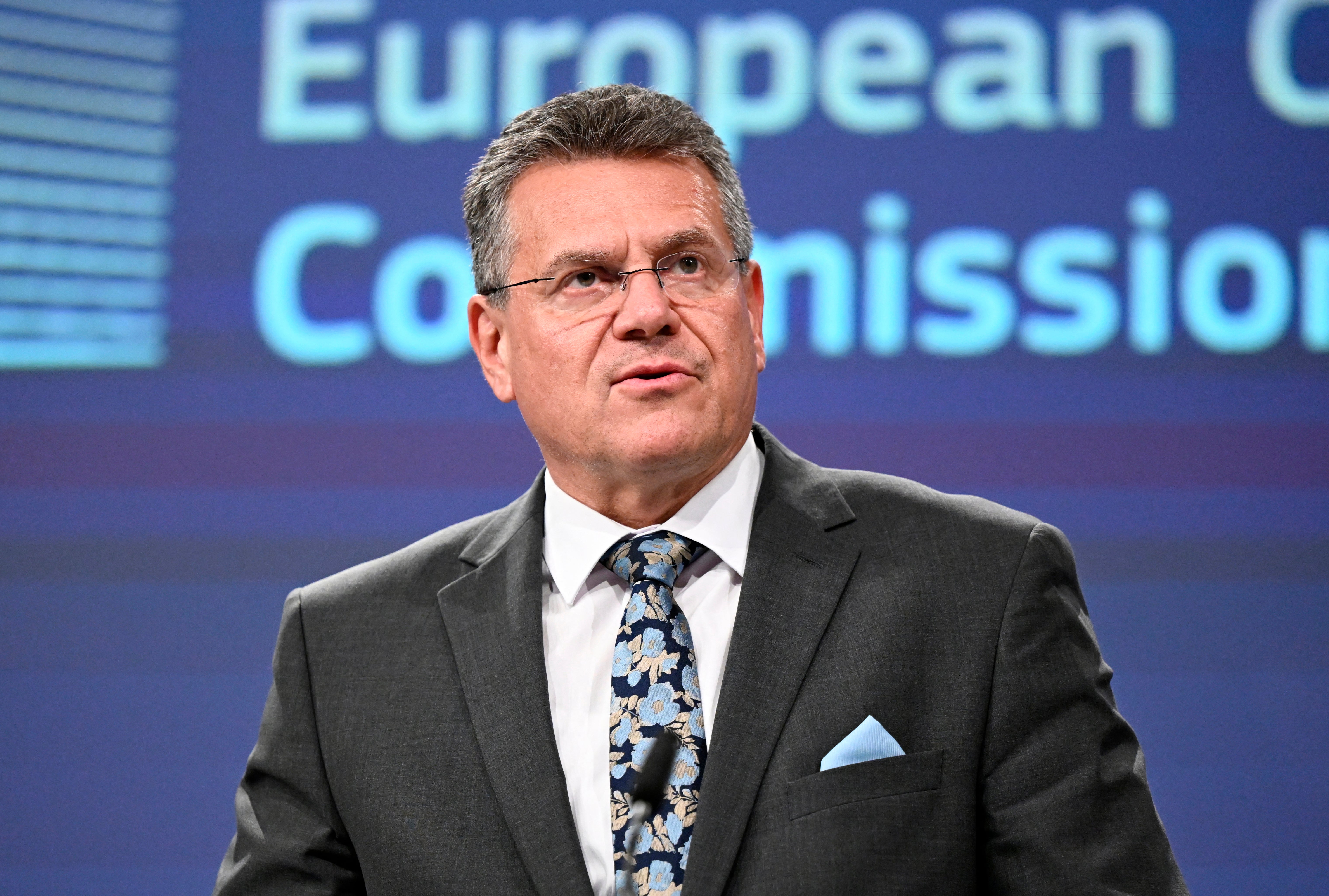
Some business groups have backed the UK joining PEM as it would help to maintain complex supply chains, but the previous Conservative Government chose not to pursue it as part of a post-Brexit trade agreement.
Speaking to the BBC at the World Economic Forum in Davos, Switzerland, Mr Sefcovic said the idea had not yet been “precisely formulated” and that the “ball is in the UK’s court”.
The UK government has reportedly begun consulting with businesses on the benefits of the PEM plan and how it could help cut red tape and improve trade.
Mr Sefcovic also told the broadcaster he would like to see the possibility of a full-scale veterinary agreement between the EU and UK reviewed.
If UK food and farm products were given single market treatment, he said it would mean “we would have to have the same rules and we have to upgrade them at the same time, we call it dynamic alignment”.
The lack of a veterinary agreement after Brexit has been a major sticking point for UK food businesses hoping to export to Britain’s nearest neighbours.
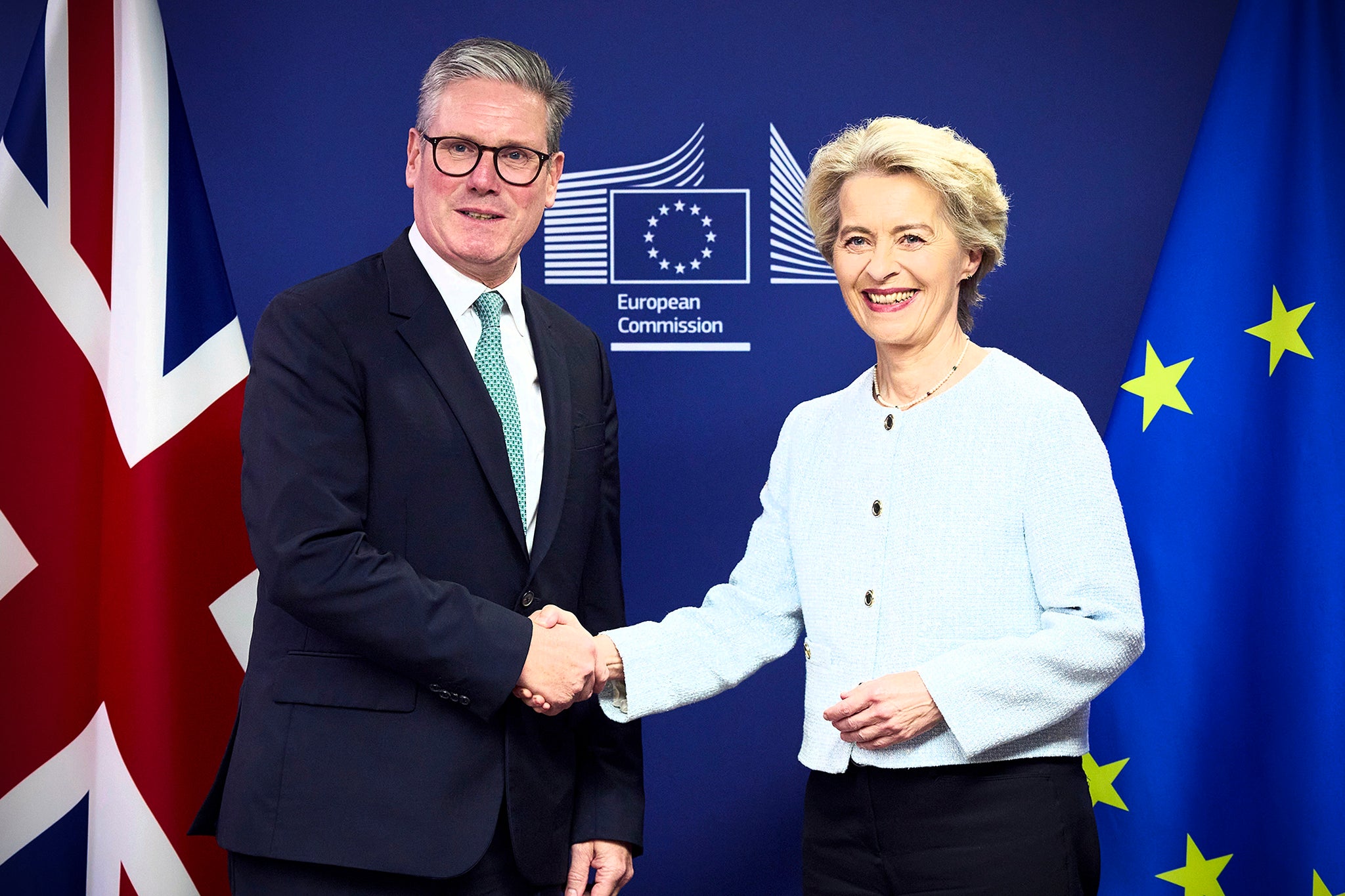
The intervention comes six months into Sir Keir’s ambitious plan to broker a new trade relationship with the EU. He has held a series of meetings with European leaders, including visiting European Commission president Ursula von der Leyen in Brussels in October and hosting Emmanuel Macron at his grace and favour country estate Chequers this month.
A key sticking point in the reset so far has been Sir Keir’s reluctance to accept a youth mobility scheme with Brussels, which would allow under-30s to study, work and travel across the European Union for up to two years.
The PM is wary of agreeing to anything that his opponents could portray as a betrayal of Brexit, while some in government fear a youth mobility scheme would drive up immigration numbers.
Europe’s other key demands centre on EU access to UK fishing waters and Britain’s adherance to rulings in the European Court of Justice (ECJ).
-

 Fashion8 years ago
Fashion8 years agoThese ’90s fashion trends are making a comeback in 2025
-

 Entertainment8 years ago
Entertainment8 years agoThe Season 9 ‘ Game of Thrones’ is here.
-

 Fashion8 years ago
Fashion8 years ago9 spring/summer 2025 fashion trends to know for next season
-

 Entertainment8 years ago
Entertainment8 years agoThe old and New Edition cast comes together to perform You’re Not My Kind of Girl.
-

 Sports8 years ago
Sports8 years agoEthical Hacker: “I’ll Show You Why Google Has Just Shut Down Their Quantum Chip”
-
Business8 years ago
Uber and Lyft are finally available in all of New York State
-
Entertainment8 years ago
Disney’s live-action Aladdin finally finds its stars
-
Sports8 years ago
Steph Curry finally got the contract he deserves from the Warriors
-
Entertainment8 years ago
Mod turns ‘Counter-Strike’ into a ‘Tekken’ clone with fighting chickens
-
Fashion8 years ago
Your comprehensive guide to this fall’s biggest trends








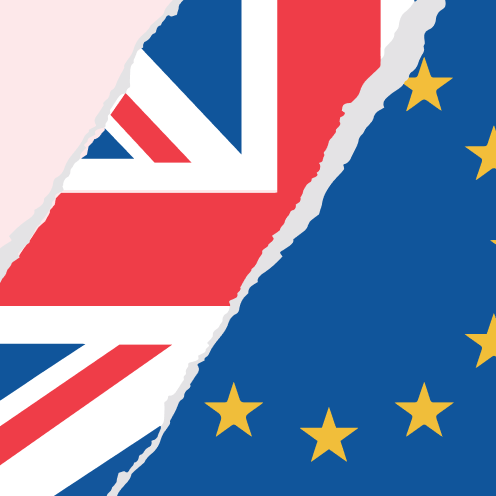


You must be logged in to post a comment Login